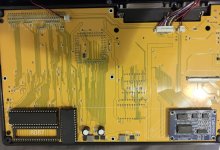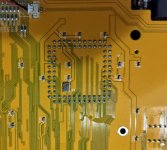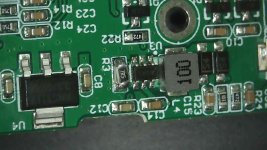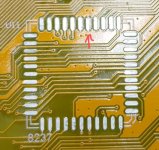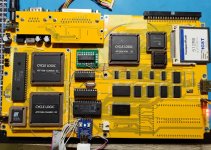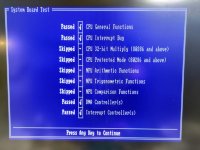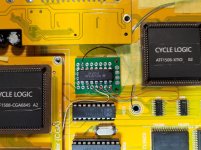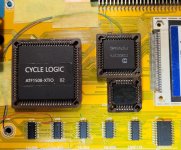n0p
Experienced Member
As my Book V2 arrived not working, i decided to do a quick photo session of it's internals.
If you're thinking about getting one that might help you a bit.
Main board, front:
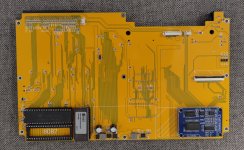
You can see a good example of "Not my job" here (but that's not the actual problem with my V2):
here (but that's not the actual problem with my V2):
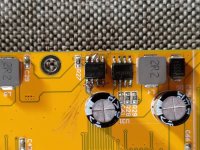
Back of mainboard:

DMA and Interrupt controller PLCC chips are soldered to board, VGA card has BIOS chip soldered to board as well. Book V1 has DMA chip socketed.
Board part under video card:
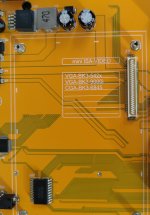
VGA card closeup (there's nothing on it back), looks like 1MB RAM?:
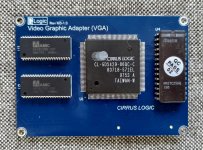
Ports board, with (there's barely visible microcontroller under part that looks like oscilliator)

It's mounted to case with 5 screws, holds pretty good.
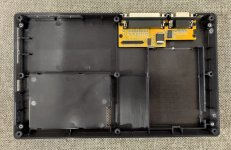
Battery has it's own compartment, which is good, but cannot be easily disconnected without disassembling the Book as i hoped.
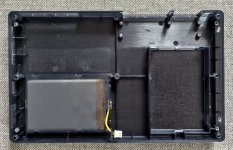
CGA card, front and back:
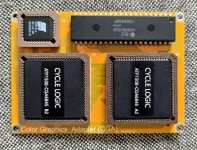
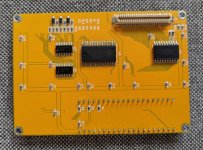
Possibly newer RAM chip than in Book V1. ROM socketed - so you can write your codepage there. Most probably they still had a stock of those chips and sockets from discontinued Hand386.
If you're thinking about getting one that might help you a bit.
Main board, front:

You can see a good example of "Not my job"

Back of mainboard:

DMA and Interrupt controller PLCC chips are soldered to board, VGA card has BIOS chip soldered to board as well. Book V1 has DMA chip socketed.
Board part under video card:

VGA card closeup (there's nothing on it back), looks like 1MB RAM?:

Ports board, with (there's barely visible microcontroller under part that looks like oscilliator)

It's mounted to case with 5 screws, holds pretty good.

Battery has it's own compartment, which is good, but cannot be easily disconnected without disassembling the Book as i hoped.

CGA card, front and back:


Possibly newer RAM chip than in Book V1. ROM socketed - so you can write your codepage there. Most probably they still had a stock of those chips and sockets from discontinued Hand386.

